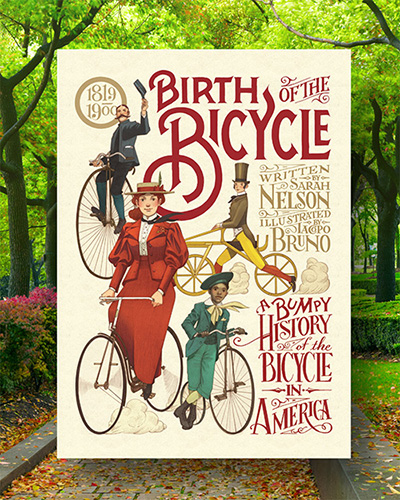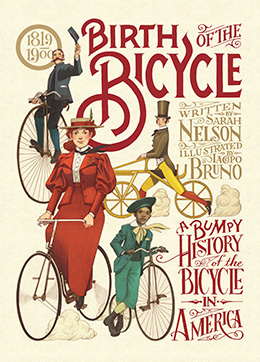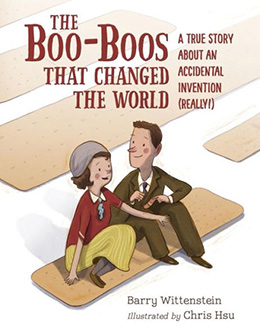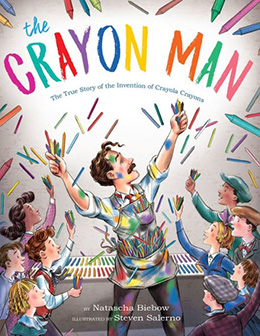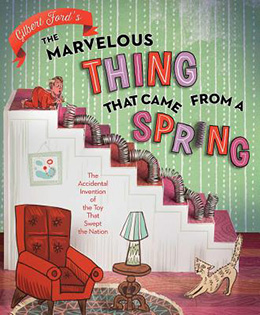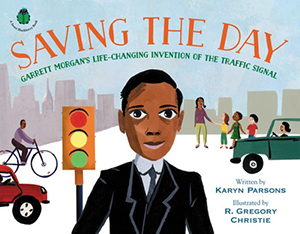One of my earliest vivid memories is of zooming along on the back of my dad’s bicycle. It’s just a snapshot of a memory, but packed with sensation. The summer sun was bright — the sky cerulean. Wind was flying through my hair. I remember feeling happy and so free.
 From babyhood onward, kids are on the move. They shimmy, scoot, toddle, waddle. They walk. They wander. Then run, run, run. You can’t keep those busy bodies still. Soon enough, they’ll ride and roll. Since 1900, most of that riding and rolling has happened on bicycles.
From babyhood onward, kids are on the move. They shimmy, scoot, toddle, waddle. They walk. They wander. Then run, run, run. You can’t keep those busy bodies still. Soon enough, they’ll ride and roll. Since 1900, most of that riding and rolling has happened on bicycles.
It’s no wonder that children love these clever machines. As kids learn to ride, their worlds widen; their independence grows. Once upon a time, bicycles widened the world and offered freedom and independence to people young and old.
I discovered the humorous and exciting history of bicycles in 2018 when I was stuck at home with a broken leg. Rolling through history on some wonderfully wacky machines was a welcome escape from forced immobility. So, too, was writing Birth of the Bicycle: A Bumpy History of the Bicycle in America. It’s a fun and fascinating read for summertime with a story to entertain and inspire readers and riders of all ages. What a treat to share some highlights with you here.
Bicycle history begins at least one hundred years before the first actual bicycle with inventors who were exploring the idea of people-powered vehicles. Most of their machines took the form of horseless carriages — giant, slow, heavy carts, operated with levers, pulleys, and cranks. From this cumbersome context, the first two-wheeled machine must have seemed revolutionary. Invented in Germany in 1817, it was made entirely of wood and had no pedals. Wealthy men were soon striding down streets and dashing along sidewalks throughout Europe. People thought of these early bicycles — or “velocipedes” — as alternatives to horses.
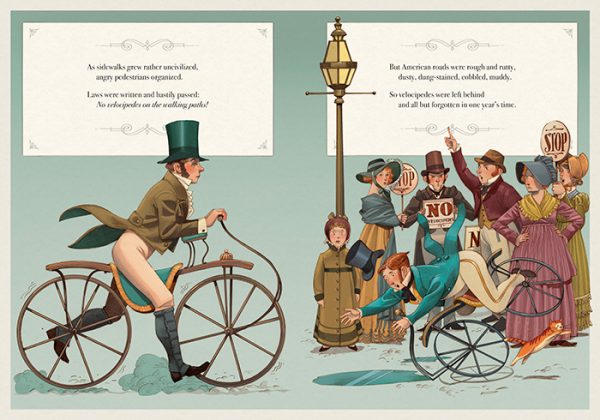
by Iacopo Bruno. Reproduced by permission of the publisher, Candlewick Press, Somerville, MA.
In 1819, in somewhat sleeker form, velocipedes made their way to the U.S. They were adored by young men and hated by the public. In the end, muddy, bumpy, horse-poop-littered roads made velocipede riding a very brief fad. The next bicycle wasn’t invented for almost another fifty years. This one had pedals and — after trials and accidents — eventually brakes. Once more, there was a frenzy for riding these “boneshakers” — nicknamed for the body-rattling experience of pedaling one. Again, it didn’t last.
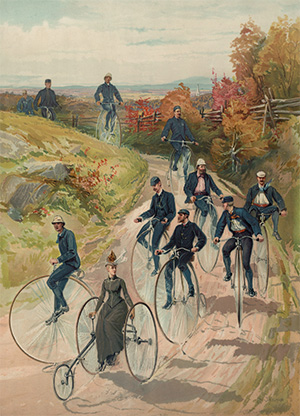
However, this time, interest in bicycling lived on. Over the next thirty years, innovations kept coming. High wheels with high seats. Double-rider and three-wheeled contraptions. All were quirky, extremely expensive, and frequently dangerous until at last (thanks to chains and rubber tires) a bicycle emerged that many more people could ride.
Now here is the moment in bicycling history that is most delightful and exciting to share: the bicycles of the 1890s became tools of women’s liberation. Really!
After years of confinement in their homes or in factories, women ditched their heavy dresses, their corsets and petticoats, and took to the roads (without chaperones). I still feel giddy and giggly just thinking about all those ladies in bloomers cruising around.
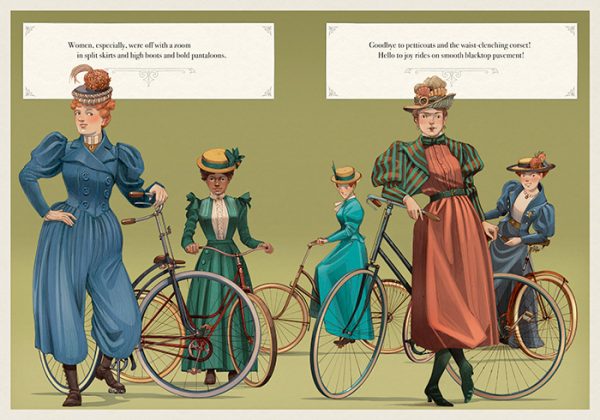
There’s much more to the bumpy, intriguing story of bicycles, so I hope you’ll check out the rest of the tale. Children are naturally curious about how things work and how familiar objects and machines were invented. Yet it’s easy for all of us to take everyday items and modern conveniences for granted. We appreciate things more deeply when we learn the stories behind our inventions. The stories help us see that new creations arise to fill a need or fix a problem. Then with ingenuity, trial and error, hard work, collaboration, and even a sense of humor and fun, something new is created. Then it keeps on evolving.
I’ve curated a batch of beautiful books below about inventions and inventors. I hope they will invigorate your summer reading lists and spark curiosity and imagination. Happy reading.
Balloons Over Broadway: The True Story of the Puppeteer of Macy’s Parade
written and illustrated by Melissa Sweet
Clarion Books, 2011
Children’s book lovers will already know Melissa Sweet’s exquisite classic. But read it again with a lens for invention. Children will see the creative process in action as passion, play, and perseverance turn giant balloons into the upside-down puppets that now animate our most famous parade.
Birth of the Bicycle:
A Bumpy History of the Bicycle
in America 1819 – 1900
written by Sarah Nelson
illustrated by Iacopo Bruno
Candlewick Press, 2024
From the publisher: Three cheers for the birth of the bicycle! Hop on for a jaunty, rhythmic ride through a playfully illustrated history. From the pedal-less, brakeless wooden velocipedes of the 1800s to the sleek racing machines of today, from a luxury for the wealthy to a lifeline for the working class, the bicycle’s journey is a study in invention, innovation, and ingenuity.
The Boo-Boos That Changed the World:
A True Story About an Accidental Invention (Really!)
written by Barry Wittenstein
illustrated by Chris Hsu
Charlesbridge, 2018
Thanks to a klutzy cook, who often injured herself, and a caring husband, who knew a little about medical supplies, children everywhere now have Band-Aids for boo-boos. Learn all about it in this endearing, humorous tale of Earle and Josephine Dickson. Thoughtful back matter explores how discoveries arise and provides a timeline of medical inventions of the 1920s and 1930s.
The Crayon Man: The True Story of
the Invention of Crayola Crayons
written by Natascha Biebow
illustrated by Steven Salerno
Clarion Books, 2019
Edwin Binney was an inventor who loved color and saw it everywhere in the living world around him. He lamented the drab, crumbly chalks that children had to use to write or draw. At the urging of his wife, a former schoolteacher, Edwin worked with his factory team on a solution. Melting, mixing, grinding, sifting, they finally found the magic blend of wax and pigments that became the first Crayola Crayons. The rest, as they say, is history. Great story and strong back matter, which features photos from a modern-day crayon factory.
Dream Builder:
The Story of Architect Philip Freelon
written by Kelly Starling Lyons
illustrated by Laura Freeman
afterword by Philip Freelon
Lee & Low Books, 2020
A lovely biography of Architect Philip Freelon shares how a creative boy who loved art and math, but struggled to read, found his calling creating beautiful public buildings. Most notably, he led the team that designed and built the Smithsonian National Museum of African American History and Culture on the National Mall.
A History of Toilet Paper
(and Other Potty Tools)
written by Sophia Gholz
illustrated by Xiana Teimoy
Running Press Kids, 2022
If you pass over this book because of the — well — potty talk, then you’ll definitely be missing out. This roll through toilet paper and toileting history is often hilarious and sufficiently gross to show young readers that history can be ridiculous and fun.
How People Learned to Fly
written by Fran Hodgkins
illustrated by True Kelley
Collins, 2007
This playful history of flight travels through time, from ancient fascinations with flying to early contraptions and risky (mostly-failed) attempts to the first successful gliders and planes. Throughout, children learn, as the inventors did, about concepts like gravity, air flow, lift, and draft.
The Marvelous Thing That Came from a Spring: The Accidental Invention of the Toy That Swept the Nation
written and illustrated by Gilbert Ford
photography by Greg Endries
Atheneum Books for Young Readers, 2016
Kids will enjoy this playful origin story of the Slinky, which was perhaps more discovery than invention by a creative engineer with a business-savvy wife. Engaging colorful drawings displayed and photographed with found objects. Author note adds interesting detail.
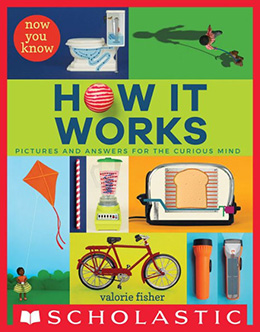
Now You Know How It Works:
Pictures and Answers For the Curious Mind
written and illustrated by Valorie Fisher
Orchards Books, 2018
Bright, colorful pages and engaging close-up photographs are paired with concise text and easy-to-read graphics that show even very little readers how everyday objects and inventions work. Discover your toaster and toilet anew. Understand the timeless science of zippers, pencils, boats, balls, and screws. Investigate compost and trash. Then wash up with a recipe for soap. This deceptively simple book packs in lots of content, and even adults may learn a thing or two.
Saving the Day: Garrett Morgan’s
Life-Changing Invention of the Traffic Signal
written by Karyn Parsons
illustrated by R. Gregory Christie
Little, Brown Books for Young Readers, 2021
A fictionalized account of Inventor Garrett Morgan’s life and the inspirations for his traffic signal that conveyed three signs — slow down, stop, and go — and was the precursor of our modern-day stoplight. Back matter shares the original patent drawings and a reflective author note.

